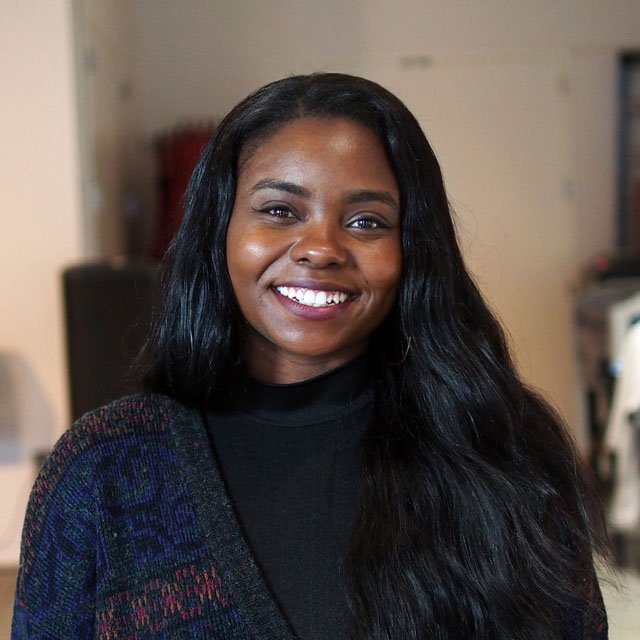Meet the Eyebeam Access (2018-2019) Residents Interview: LaJuné McMillian in conversation with open call jury member Salome Asega
Learn more about the Open Call: Access.
LaJuné McMillian is a new media artist, and creative technologist creating art that integrates performance, virtual reality, and physical computing to question our current forms of communication. While at Eyebeam, they will create The Black Movement Project, an online library equipped with 3D black character base models and motion capture data from black performers previously unrepresented in available databases. They spoke with Salome Asega, Assistant Director of POWRPLNT, Curatorial Advisor of REFRESH, and Eyebeam alum.
Salome Asega: Congratulations on the residency at Eyebeam this year. The theme for the year is access, and I’m wondering how does the work you do tie into this theme?
LaJuné McMillian: The project itself is called The Black Movement Project. I’m trying to focus on building a motion capture library and tool for black 3D-based characters. It’s a library that people can use to download motion-capture files and character they want to use. They will have access to the way that we move through time. It’s a museum, or an archive, of the ways that we move.
SA: There are so many entry points to how we think about access: access to resources, access as it relates to disability justice. I like this idea of access to yourself and your representation in digital form, in 3D form.
LM: What I’m trying to do is create a space where I can bring black people into the 3D community. I want to bring in black performers and activists. I’m trying to create this space where we can all sit down and build these tools together.
SA: What do you think needs to happen, or should happen, in what you call the 3D community / VR community space to become more accessible and more inclusive?
LM: Making the tools more affordable would be helpful, but the tools that are out now don’t cater to the black community at all. There are no characters that represent me. I want to open up the XR community to more black performers, activists, and modelers, and coders, making the tools more of a reflection of the black community.
SA: I’m curious about what kind of exploratory places you’re interested in reaching during this residency? What are some weird experiments you want to get into while at Eyebeam? What are things that you’re excited about trying, that you haven’t had time or resources for yet?
LM:I’m going to make this tool by researching a huge range of black bodies. I’m going to do body scans of all different types of black people. I’m really interested in different sizes, body forms, and skin/hair textures to showcase the diversity of blackness. How have we used movement as a form of resilience?
SA: I love you saying that you’re in a place of research, and that you’re willing to do this research—that you want to do this research—with other people. It’s a beautiful way to start your residency. That you’re willing and you want to learn with other people to create spaces for you to exist in this 3D/XR community. So, thank you so much. I’m very excited to see what happens this year and I can’t wait to start poking around this library and even use some of the things you create.
More information about the Black Movement Project, can be accessed here.
